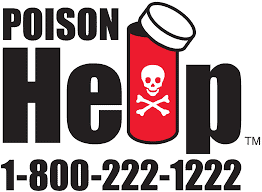“Let’s visit Grandma!” Toddlers are naturally curious about their surroundings and visiting new places is exciting. It can also be dangerous. Every place has its own challenges and dangers. Grandma’s house is no different. To protect the safety of children, parents and nannies must identify and mitigate potential risks in new situations.
You can run this quick checklist to mitigate potential risks, but remember – each home is unique and there may be dangers that are not captured here. First, look at the environment from the child’s perspective, this is a new and exciting adventure with lots of new things to explore. Then, before turning the child loose get down on the floor and look at everything from their level.
Family Living Areas:
- Make sure all breakable items are moved out of the child’s reach.
- Clear pathways if possible to reduce collisions and falls.
- Inspect furniture and if the edges are sharp, cushioned corner protectors and edge protection pads may be needed.
- Secure all large pieces of furniture as furniture tip-overs are a risk that can happen in any room of a house. A child may climb, fall against, or pull up against a piece of furniture.
- Seal off all electrical outlets with safety plugs whenever possible. Make sure all electrical cords are out of reach.
- Never leave a child unattended in a room with a fireplace that is burning. Children can get burned from hot glass or safety screens if they get too close. Children should be taught from an early age that fire is dangerous, and fireplaces are off-limits.
- Whenever possible, close off access to stairs with safety gates at both the top and bottom. When babies start to crawl they sometimes see a staircase as an exciting challenge.
Kitchen:
- Store dangerous items including soaps, cleaners, furniture polish, matches, sharp objects, and breakables – in high cabinets or locked up and out of sight. If some of these items must be stored in a lower cabinet, make sure the cabinet has a child safety lock.
- Make sure any of Grandma’s decorative refrigerator magnets are out of reach as children are often drawn by the colorful magnets and want to see how they taste.
- Keep garbage in a child-resistant can or behind closed doors in a locked cabinet. Many garbage cans contain plastic bags that can become wrapped around a child’s arm, leg, or neck cutting off circulation or they can be ingested and cause choking or suffocation.
- Whenever possible, use the back burners on a stove so a small child cannot reach the hot burner. This can also keep a small child from grabbing a pot and getting burned or scalded by the hot content.
- Be aware of ovens as the sides and/or front may get hot when in use. When opening the oven door, be aware of any small children standing close by. Children should not be close enough to touch hot surfaces or get a face full of hot air.
Dining Room:
- Keep foods and condiments out of reach of small children to reduce the risk of burns from hot food and the potential for messes.
- Do not keep a cloth on the dining table. Small children may pull the cloth and bring everything on the table down and on top of themselves. Instead, try non-slip placemats to facilitate clean up.
- Make sure high chairs or booster seats are secure.
- The high chair should be steady and not prone to tip over easily. A child should always be strapped into the chair, including the crotch strap to prevent the child from sliding down. A small child should never be left alone in a high chair – they may try to rise or push against a table or cabinet and cause the chair to tip.
- Booster seats must be securely fastened to the chair so that it cannot slip or slide around. If possible, review the instructions that come with the seat to make sure it is installed and used appropriately. One risk as the child gets larger is that they may push against the table, causing the chair to tip and the child to be injured.
Bathrooms and Laundry Rooms:
- To prevent bathroom injuries, it’s easiest to keep the child out of the room with the door closed unless he is accompanied by an adult.
- If there is a lock on the bathroom door, make sure it can be opened from the outside in case a child locks themselves inside the room.
- Toilets are fascinating things to young children and the swishing water can be mesmerizing. Get in the habit of closing the lids of all toilets in the home.
- Make sure that the washer and dryer doors are closed when the machines are not in use. Small children like to play hide and seek and may see the openings as hiding places.

Remove Potential Poisons:
Poison prevention is a vital part of childcare. If a child should ingest a poisonous substance, it is critical that the medical staff know what was ingested. Always store poisonous or toxic products in their original containers. Most containers are printed with ingredients and treatment information that is useful to the medical staff.
Every household with children should always have the local Poison Control Emergency Number or the National Poison Control Number (1.800.222.1222) readily available. If a child shows immediate medical problems from poison ingestion, call 911.
- Keep cleaning products (bathroom, drain, and oven cleaners) and medications (both prescription and over the counter) out of reach of young children. Cosmetics and personal care items such as creams, lotions, toothpaste, mouthwash, and even some kitchen spices can result in poisoning in children under 6. These should always be kept out of reach of small hands, preferably in a locked cabinet.
- Securely store all alcohol out of a child’s sight and reach. Alcohol is a poisoning threat that is sometimes overlooked but it can be deadly if ingested by small children. When the family is entertaining, make sure all bottles and glasses are out of reach of any small children.
- Keep pods in their original containers and out of reach of small children. Pods are a convenient way to deliver dishwasher and laundry detergent, but they are generally brightly colored and can attract a toddler’s attention! The ingredients are very concentrated and toxic. See the Nanny Institute article titled “Toddlers and Teens Poisoned by Laundry Pods” for more detailed information about this issue.
- Check Grandma’s plants to make sure they can’t harm the children. Many plants found around the house are poisonous. You can request a list of poisonous plants from the local Poison Control Center.
While identifying and mitigating household risks is sometimes referred to as ‘childproofing’, remember that no home can be made totally safe for children. It is critical to constantly supervise the young child while being of aware of potential risks and working to eliminate as many as possible.


Recent Comments